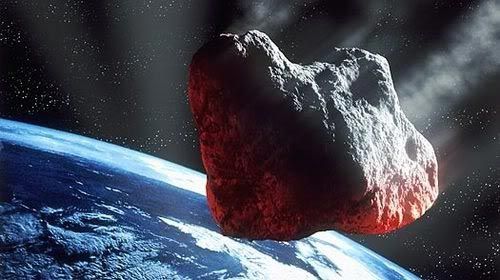
The nations of the world need to work together to develop a warning and communication system that could mitigate the worst effects of a catastrophic asteroid strike, a new report stresses.
Such a system would issue international warnings about possible impending strikes and educate the public about the threats posed by near-Earth objects. It also would call government leaders' and the public's attention to the scientific value and potential economic importance of asteroids.
Coming up with international guidelines of this sort would not be easy, since nothing of its kind has been done before, write the authors of the report, which was issued by the nonprofit Secure World Foundation.
"Today no worldwide disaster-notification protocol of any kind exists. The closest analogy might be the cooperative early-warning system developed for tsunamis in the wake of the devastating inundation of the coasts of Southeast Asia in 2004," the report states. It is being presented this week to the United Nations Committee on the Peaceful Uses of Outer Space during a conference in Vienna. [Natural Disasters: Top 10 U.S. Threats]
Communicating the risk
The report summarizes the findings of a meeting convened last November by the Secure World Foundation and the Association of Space Explorers. That meeting concentrated on helping a United Nations team develop a proposed Information, Analysis and Warning Network, or IAWN, for near-Earth objects.
The rationale behind pushing the IAWN proposal is simple: Colossal asteroid strikes, which have pummeled Earth fairly regularly over its 4.5 billion years, know no international borders. If a threatening near-Earth object (NEO) comes onto scientists' radar, the whole world will need to know — and they'll need to know what, if anything, they should do in response.
Sign up for the Live Science daily newsletter now
Get the world’s most fascinating discoveries delivered straight to your inbox.
Scientists have identified nearly 9,000 near-Earth asteroids and believe lots more are out there. Many different teams of astronomers around the world are hunting for them and keeping tabs on the ones that have been found.
The warning network would help streamline and consolidate many of these efforts, the report says.
"The IAWN has an essential role in a global response to the NEO hazard," it states. "Essentially, it would comprise the functions and activities already being carried out by the Minor Planet Center, the National Aeronautics and Space Administration’s (NASA) NEO Program Office, and Europe’s Near Earth Object Dynamic Site (NEODyS) program."
The system also would serve to keep laypeople, including lawmakers, abreast of the latest asteroid findings and threats.
"Another key component of IAWN is education and outreach, to relay information on NEO hazards and implications to the public and policymakers," the report says. "This information will generally serve to alter the general view that the cosmos has little effect on humanity here on Earth, by explaining the consequences of a NEO impact on our home planet." [Photos: Asteroids in Deep Space]
Planting the seed
The report's authors recommend using social media and television to raise public consciousness of NEOs and the threat they pose. For example, they advise enlisting the help of weather forecasters.
"Meteorologists in some countries already present astronomical information (e.g., meteor showers, space station sightings), as well as information on pollen and ultraviolet exposure indexes to their viewers," the report notes. "If they could also be enlisted to provide details of close-approaching NEOs as they occur, the general public could become more attuned to the terminology used by NEO specialists."
The authors acknowledge that it will be a challenge for any warning system to convey to the public the uncertainty surrounding any particular NEO threat. A potential impact might be years down the road, and its probability is likely to be revised as scientists make more and more observations.
The report further stresses that the IAWN's educational campaign shouldn't be all doom and gloom. Rather, it should also highlight the scientific importance of NEOs — ancient objects that could reveal insights about the solar system's birth — as well as their potential economic value.
Some NEOs are packed full of platinum-group metals and water, which make the space rocks intriguing targets for off-Earth mining. The billionaire-backed company Planetary Resources, for example, recently announced its plans to extract NEO resources using unmanned probes in deep space.
Overall, the report says the need for international cooperation and communication is urgent. A plan must be in place before a threatening space rock comes onto the scene, the authors write.
"A lot of attention is focused on the catastrophic damage a large asteroid could do if it collided with Earth," Michael Simpson, executive director of the Secure World Foundation, said in a statement. "This report focuses on how to prevent the even greater damage we could cause ourselves by miscommunicating or failing to work together on a common response to the threat."
This story was provided by SPACE.com, a sister site to LiveScience. You can follow SPACE.com senior writer Mike Wall on Twitter: @michaeldwall. Follow SPACE.com for the latest in space science and exploration news on Twitter @Spacedotcom. We're also on Facebook & Google+.













